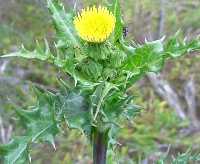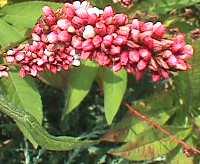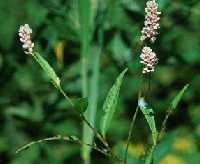| Fabaceae |
|---|
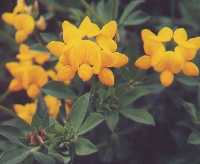
| |
Lotus corniculatus
Birdfoot Trefoil:
Differs from all members of the pea family by its
5 leaflets and head-like umbels of flowers,
5 sweet pea-shaped, bright yellow petals.
|
|
| Fabaceae |
|---|
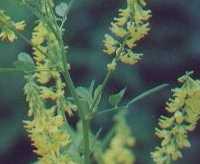
| |
Melilotus officinalis
Yellow Sweet Clover:
Pinnately trifoliolate serrated leaflets.
Introduced along with M. alba as green manure crop, hay, forage for bees; genus name means "Honey Lotus".
Musky scent when crushed; at one time used as insect repellant on textiles.
|
|
| Caryophyllaceae (Pink) |
|---|
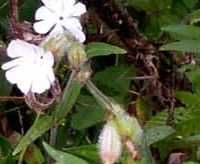
| |
Lychnis alba
White Campion
(Evening Campion):
Dioecious, fragrant flowers open at dusk and close in the morning.
5 white-to-pinkish petals deeply notched; 5 protruding styles; inflated calyx has prominent veins.
|
|
| Asteraceae |
|---|
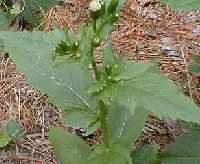
| |
Erechtites hieracifolia
Fireweed:
A pioneer after soil disturbance or fire.
Alternate, lanceolate leaves that have toothed margins.
Fruit a nutlet that contains many white pappus that disperse the seed.
|
|
|
| Asteraceae |
|---|
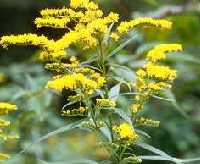
| |
Solidago gigantea
Giant (Late) Goldenrod:
Actually one of the earlier goldenrods to bloom.
Stem smooth, often glaucous, and reddish (green in shade).
Inflorescence usually a one-sided, arching panicle.
May hybridize with Tall Goldenrod (S. altissima). Moist soil.
|
|
| Urticaceae (Nettle) |
|---|
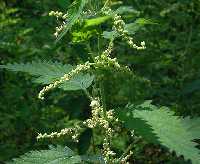
| |
Urtica dioica
Stinging Nettle:
Tiny greenish flowers are in slender, branched, interrupted spikes from the upper leaf axils.
Stinging hair on stem; stipules; rugose leaves.
|
|
|
|




